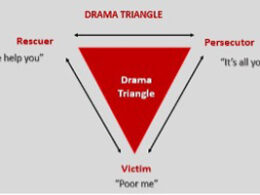By Joanie Bentz, M.Ed., LBS, CCBP An A&E reality television series called Hoarders debuted in 2009 and is still popular today. If you have viewed any of the episodes, you probably have a good idea of how hoarding disorder can escalate over time and become so severe that it causes environmental and health dangers, which impair the person from functioning and thriving normally. Typically, on the show, concerned family and friends intervene and seek treatment for the hoarder, and most of the time, with intensive support, the hoarder agrees to address their disorder. The home is cleared out, and the hoarder receives therapy to address the …
What narcissists will never understand
By Joanie Bentz, M.Ed., LBS, CCBP Narcissists are not cut out of the same mold as you and I. There are certain aspects of normal interpersonal behavior that narcissists will never understand. What does this mean? As a therapist, when I began researching narcissism, I viewed it from a more scientific view. However, with more experience and time, I have learned that the affliction seems to be multifaceted, going beyond a psychiatric explanation. Narcissists have what I call “bankruptcies” of the mind, heart and soul. They inflict moral injury. They are impoverished spirits with no supply of empathy or regard for others. A chronic misunderstanding Whether you have gone no c …
The narcissistic serial bully
By Joanie Bentz, BS, M.Ed., LBS, CCBP Bullies come in all shapes and sizes, and can be anyone in your family, circle of friends or work environment. But how do we define a serial bully? The word serial means episodical, or appearing regularly. “A serial bully is a type of person who tends to try and constantly harass or offend people by trying to become more dominant and controlling over them,” according to Depression-guide.com. The key idea here is “constantly harass.” It’s a pattern of behavior that occurs in intervals and successively as a means to some type of gratification, which varies, depending on the bully’s goals. To be cl …
10 examples of the scapegoat’s isolation in the narcissistic family
By Joanie Bentz, B.S., M.Ed., LBS A toxic family operates like a cult. The head narcissists (either one parent or both) make certain that they are able to rally their troops around them, which happen to be their children. Almost always, there is one child who is never assimilated into the cult. This child is the scapegoat. From early years, this child is observed as being highly sensitive, creative, empathetic and outspoken. Because the scapegoat is not like them, the narcissists must villainize this family member to elevate themselves and feel superior. It becomes an addiction. Hence, the other children are trained on behalf of the parents to mistreat and bully the …
10 examples of the scapegoat’s isolation in the narcissistic familyRead More
The narcissist and the ‘Drama Triangle’
by Joanie Bentz, B.S., M.Ed., LBS The “Drama Triangle,” also known as the “Victim Triangle,” is a social model of human interaction developed by a psychologist named Stephen Carpman in 1968. It is a power game where individuals consciously or unconsciously choose the role of Persecutor, Rescuer, or Victim, depending on the context of the situation. I came across this model while conducting research on Cognitive Behavioral Therapy, which is a method that mental health clinicians like me often use to assist their clients. It’s a process of logically challenging the validity of their thoughts by putting them “on trial.” The Drama Triangle is closely related to psuedomutuality, which describes …
8 reasons why narcissists create false narratives about their targets
By Joanie Bentz, BS, M.Ed., LBS Have you ever had someone unexpectedly confront you with false narratives about your life, such as your plans, decisions, activities and experiences? Were you stunned by the outrageous lies, or maybe blindsided by how the truth was cleverly mixed in with lies that made this information very believable? Perhaps it was a family member that said these things about you, or a co-worker. Sometimes, it could be an acquaintance that hardly knows you, and it's a wonder how this person could make such determinations with little contact or communication. A false narrative is simply misinformation about a person or situation. Gossip about the false narrative is almost a …
8 reasons why narcissists create false narratives about their targetsRead More
The generational abuse is finished
By Joanie Bentz, B.S., M.Ed., LBS This is the last article in a series about my work with a client, “Mary,” in which I used the empty chair technique. This therapy technique helped her explore generational abuse and express long-suppressed feelings to her father, who was deceased. You can read the previous articles here: Empty chair technique to resolve issues with deceased father Coming to terms with an abusive mother and an indifferent father Her father felt sorry for her sociopathic ex During Mary’s processing of her emotions through this empty chair technique, she realized that she had nothing to do with the origination of her family’s chaotic problems. Mary learned that while she wa …
Her father felt sorry for her sociopathic ex
By Joanie Bentz, B.S., M.Ed., LBS In my last two articles, I described how I’m using the “empty chair technique” to help a client, Mary, get closure about her disordered, but deceased, father. She wanted to know why her father felt sorry for her sociopathic ex. Read the previous articles: Empty chair technique to resolve issues with deceased father Coming to terms with an abusive mother and an indifferent father Here we have a continuation of the empty chair technique with Mary and her father. Mary finished the last session discussing how she was infantilized and abused by her mother. In this third session, Mary confronts her father about his relationship with her ex-husband. Mary’s ex …
Coming to terms with an abusive mother and an indifferent father
By Joanie Bentz, B.S., M.Ed., LBS In my last article, I described how I’m using the “empty chair technique” to help a client, Mary, get closure about her disordered, but deceased, father. Here we have a continuation of the empty chair technique with Mary and her father. Mary finished the last session telling her father that she is finished trying to reason with unreasonable people. In this second session, Mary picks up where she left off. She wants to discuss her abusive mother. Mary’s father makes a choice too Joanie: Mary, you told your father you are done reasoning with unreasonable people. You told him you made a choice. Did he agree with your choice? Mary: No, by his silence, he di …
Coming to terms with an abusive mother and an indifferent fatherRead More
Empty chair technique to resolve issues with deceased father
By Joanie Bentz, B.S., M.Ed., LBS As a cognitive behavioral therapist, I have recently incorporated what is called “the empty chair” technique with my clients. This technique is for individuals who have a need to express themselves to someone that is emotionally unavailable, living far away, in prison, or deceased. Commonly this technique is used to resolve a conflict with someone who will not visit a counselor or therapist with the client. Also, if there is an overtly dysfunctional family member (an addict or alcoholic) who will not seek therapy or talk about their problem, this empty chair technique is effective for family members who are witnessing their destructive behaviors and feel hel …
Empty chair technique to resolve issues with deceased fatherRead More






